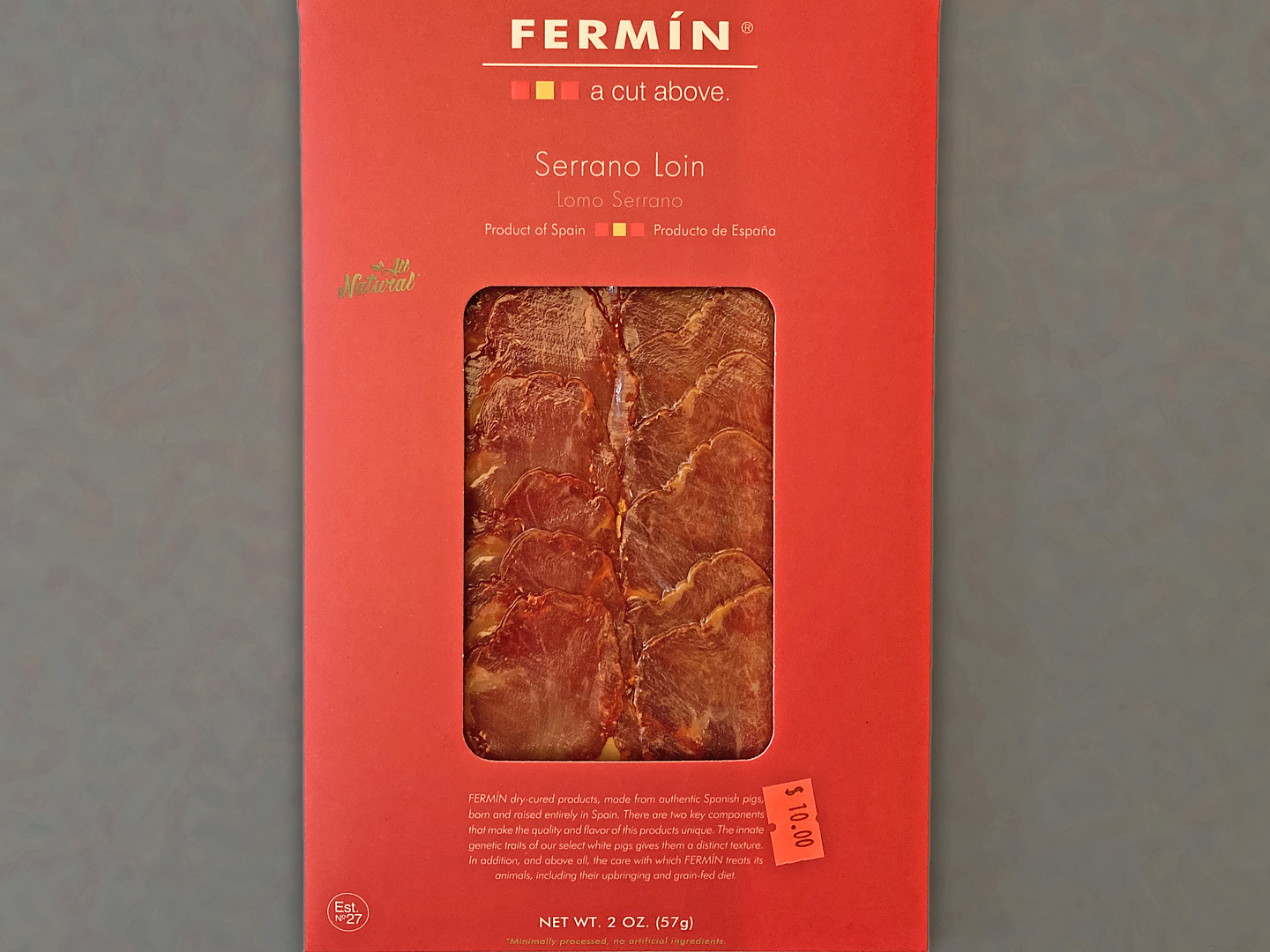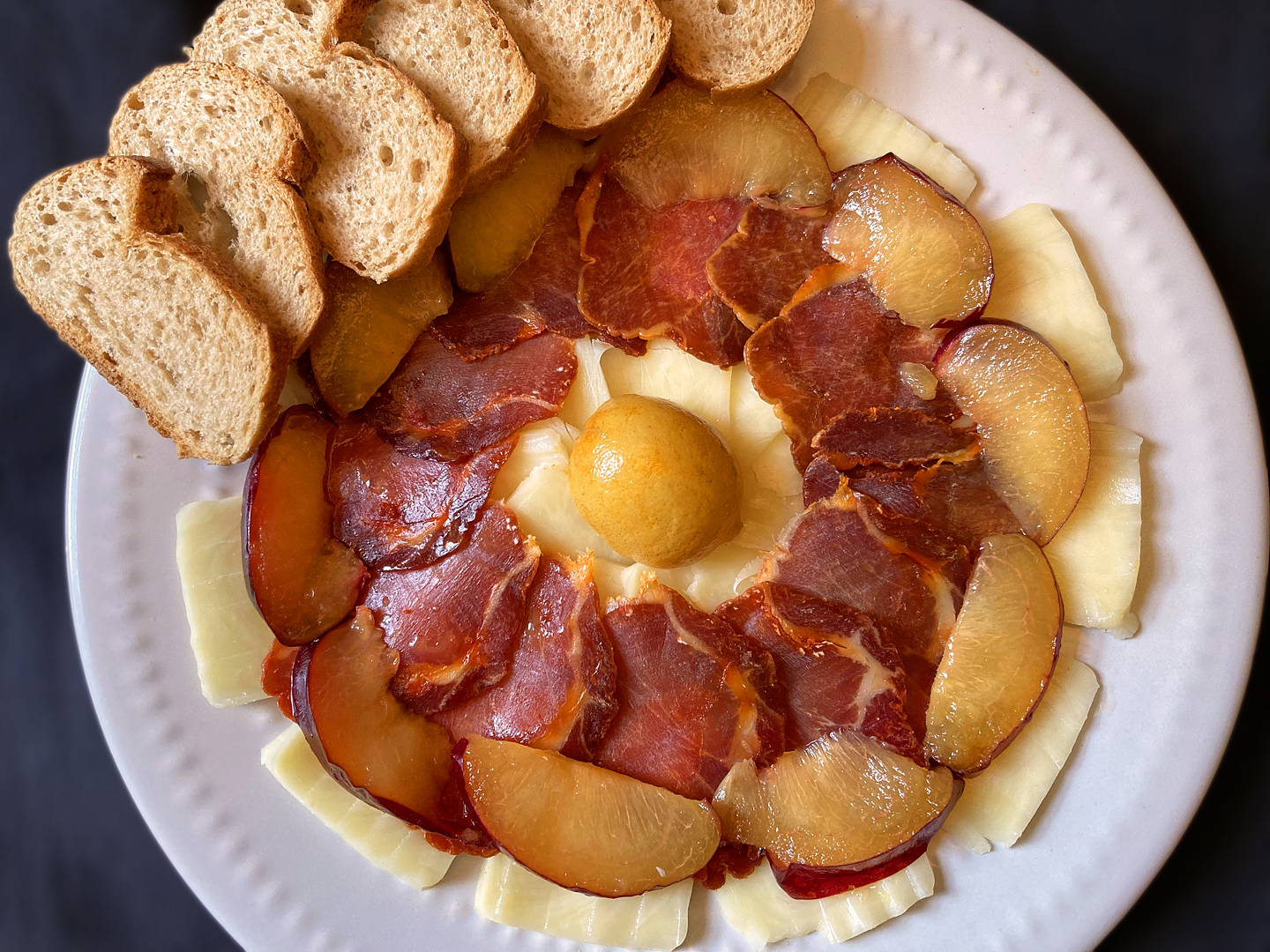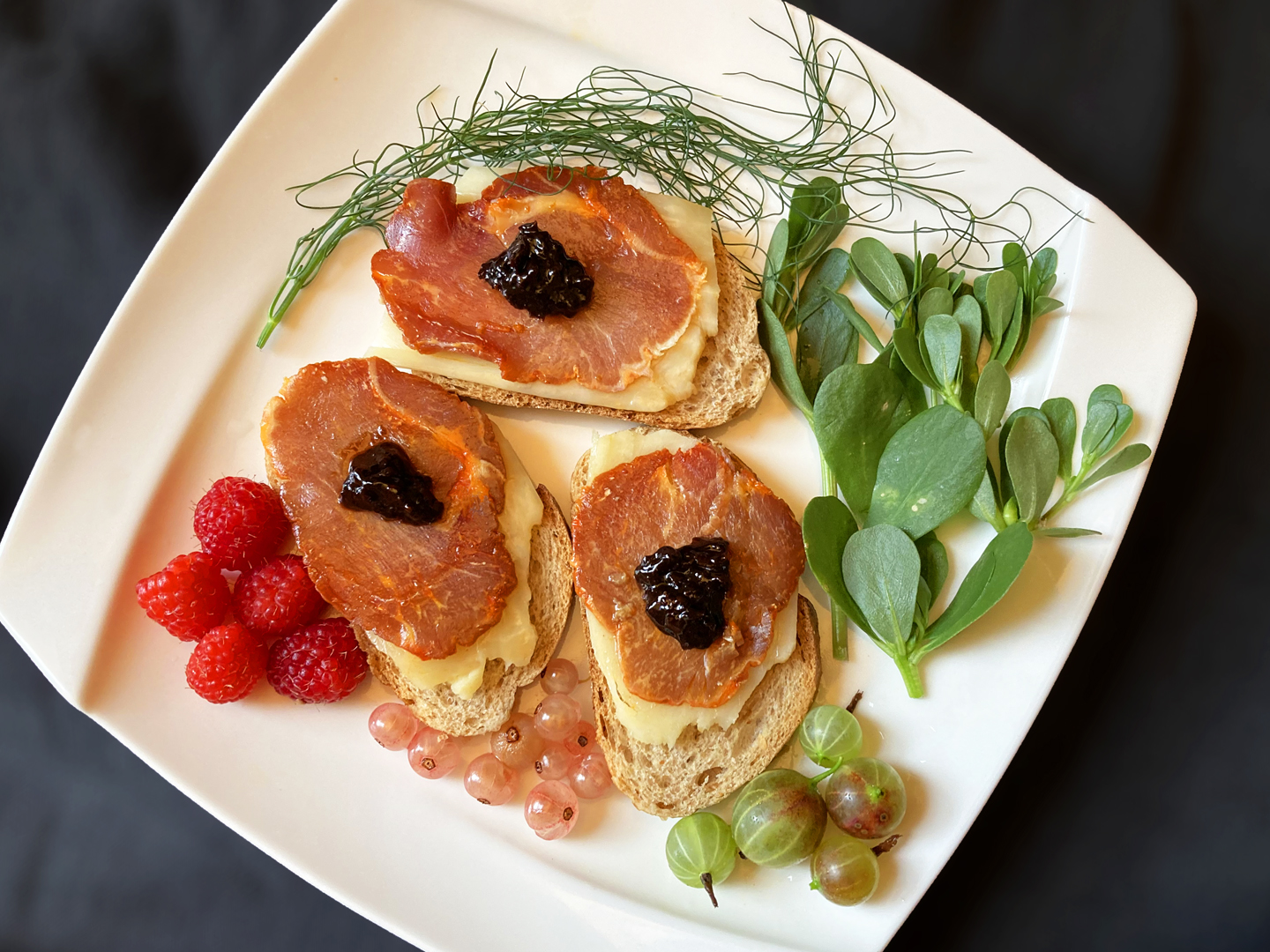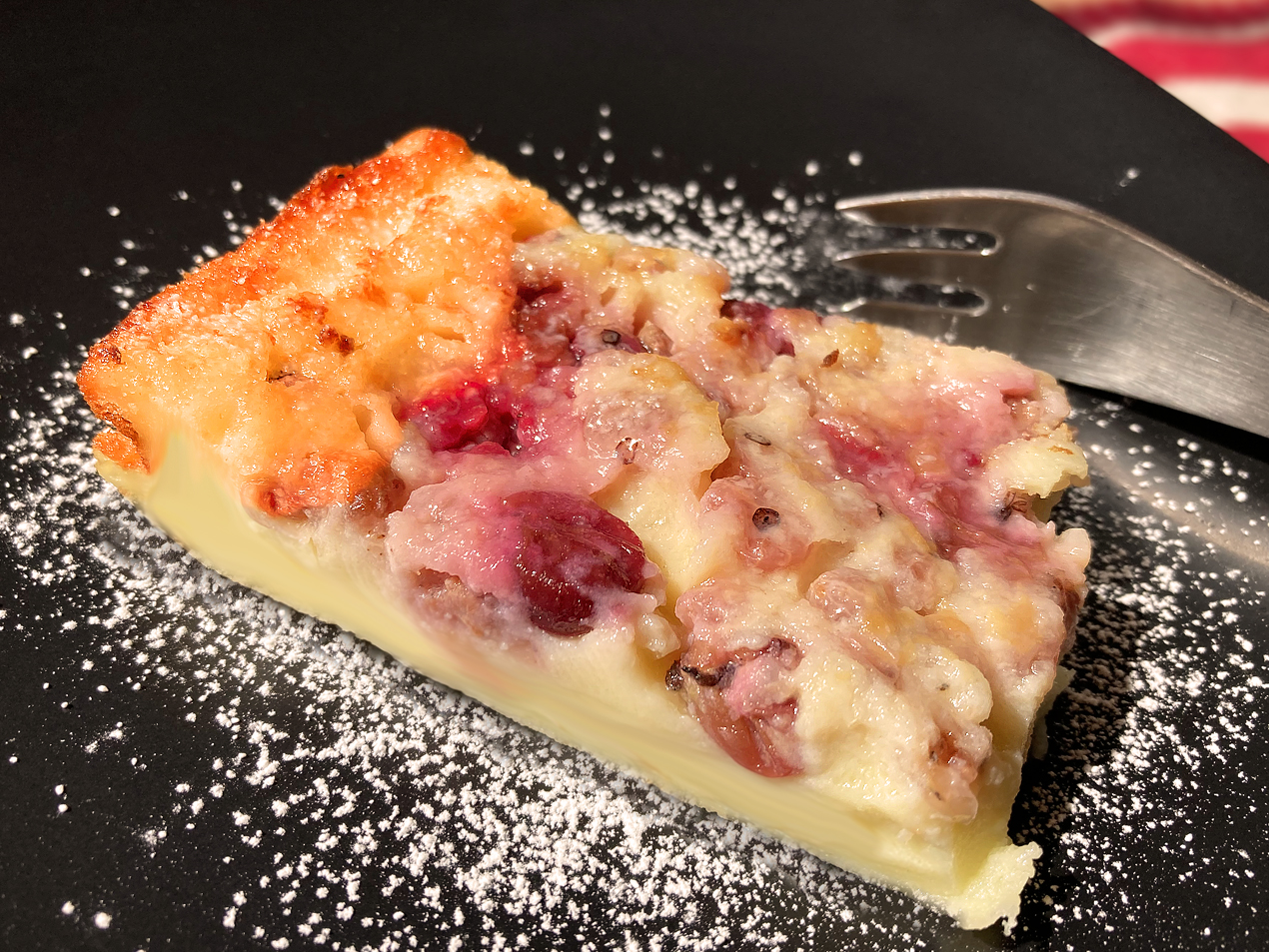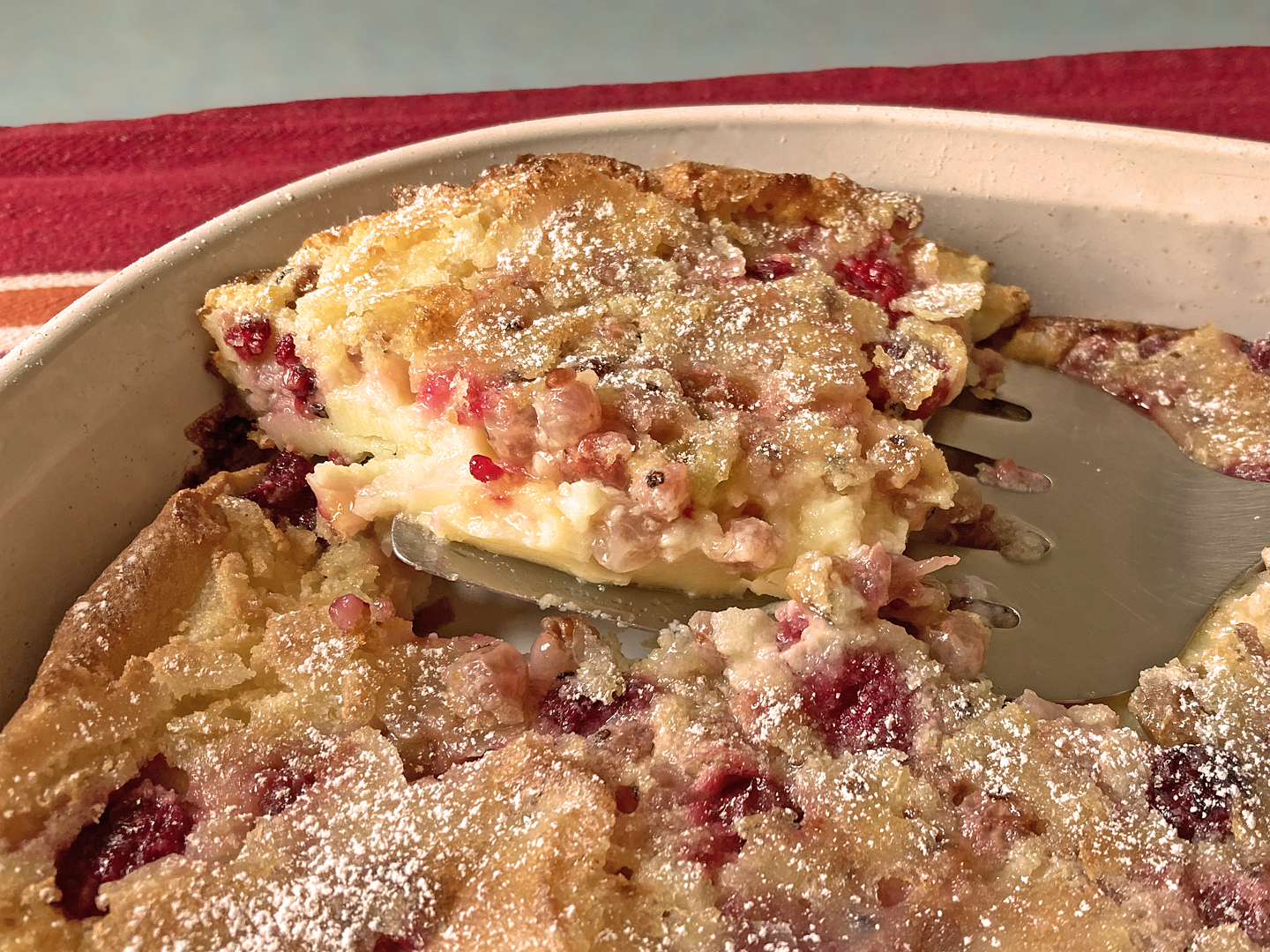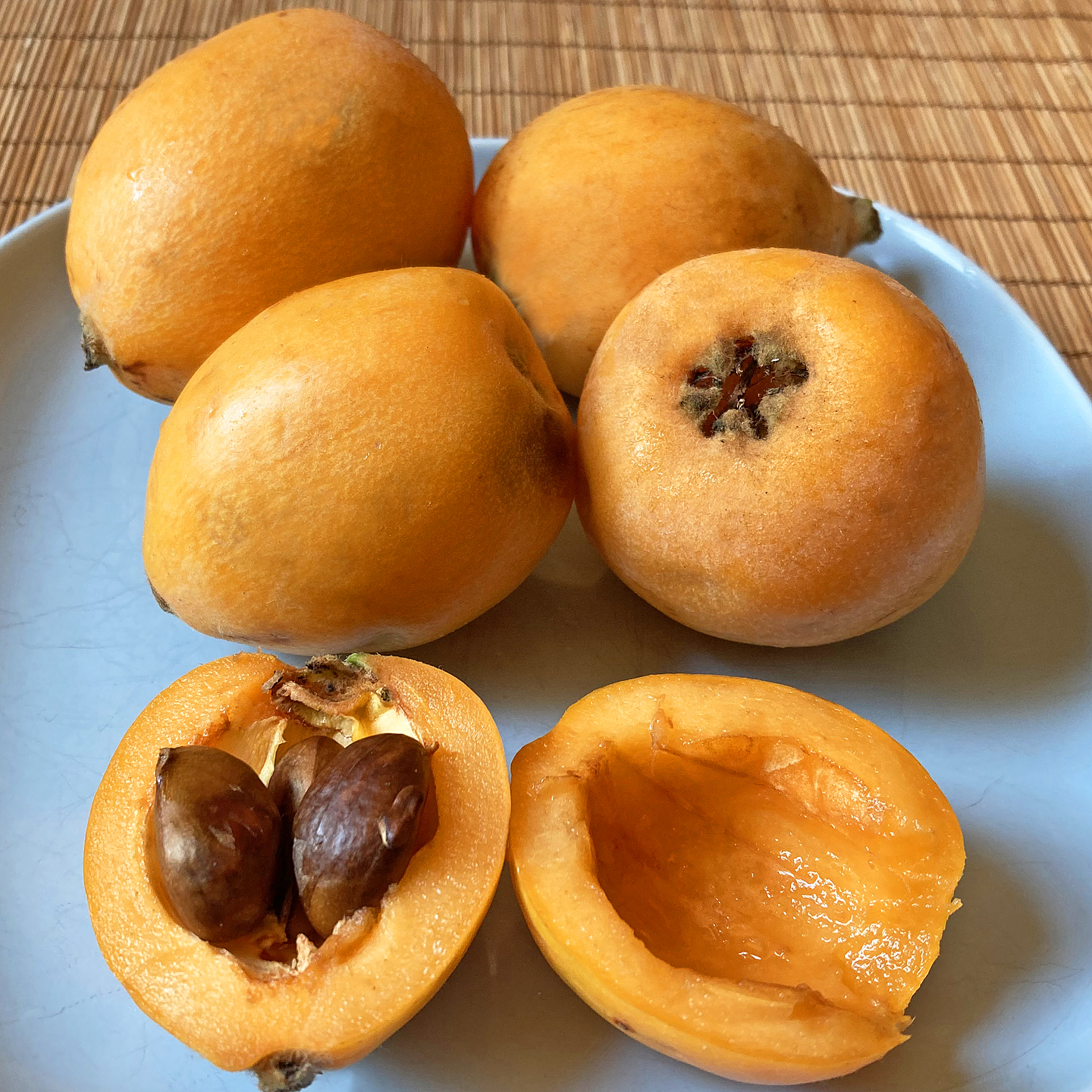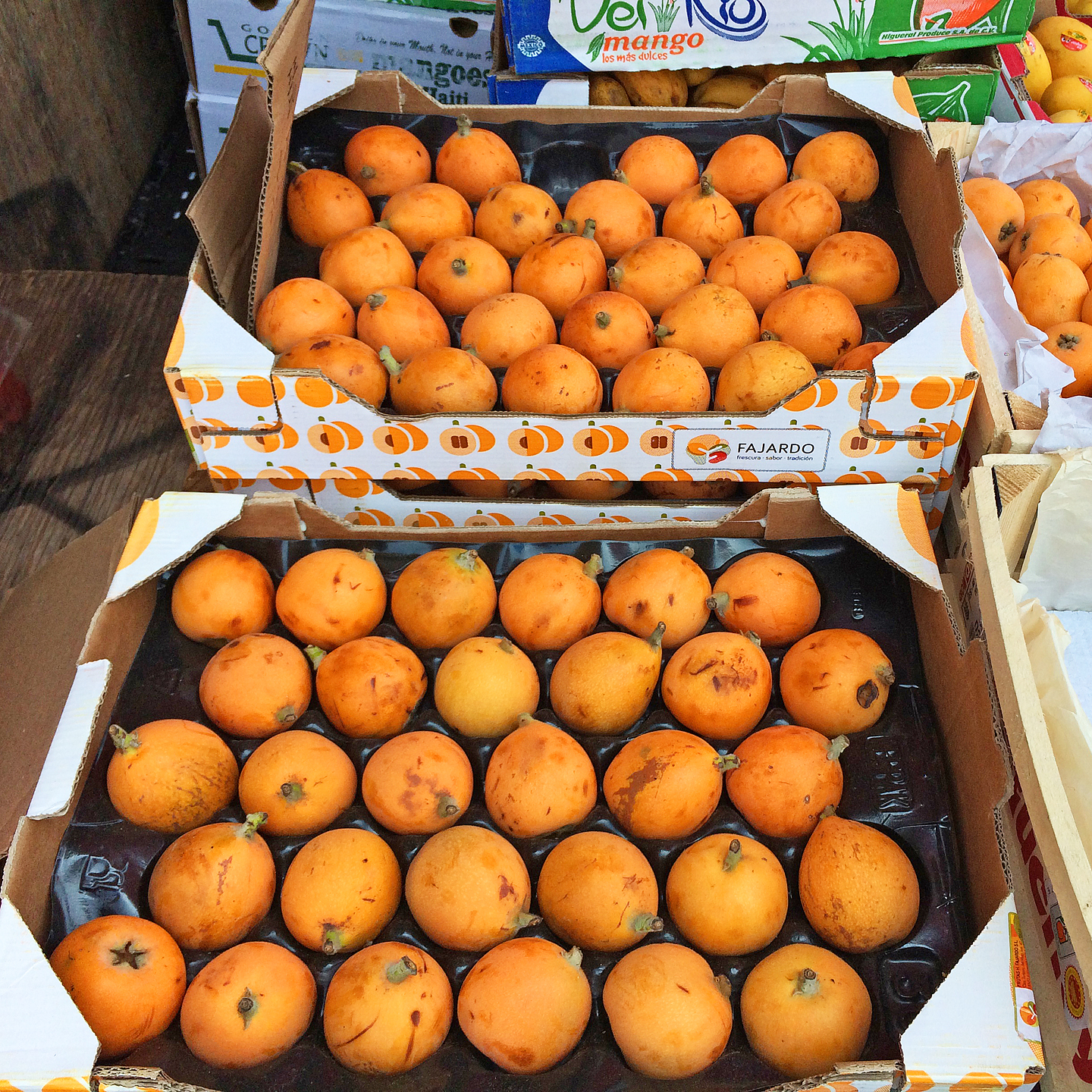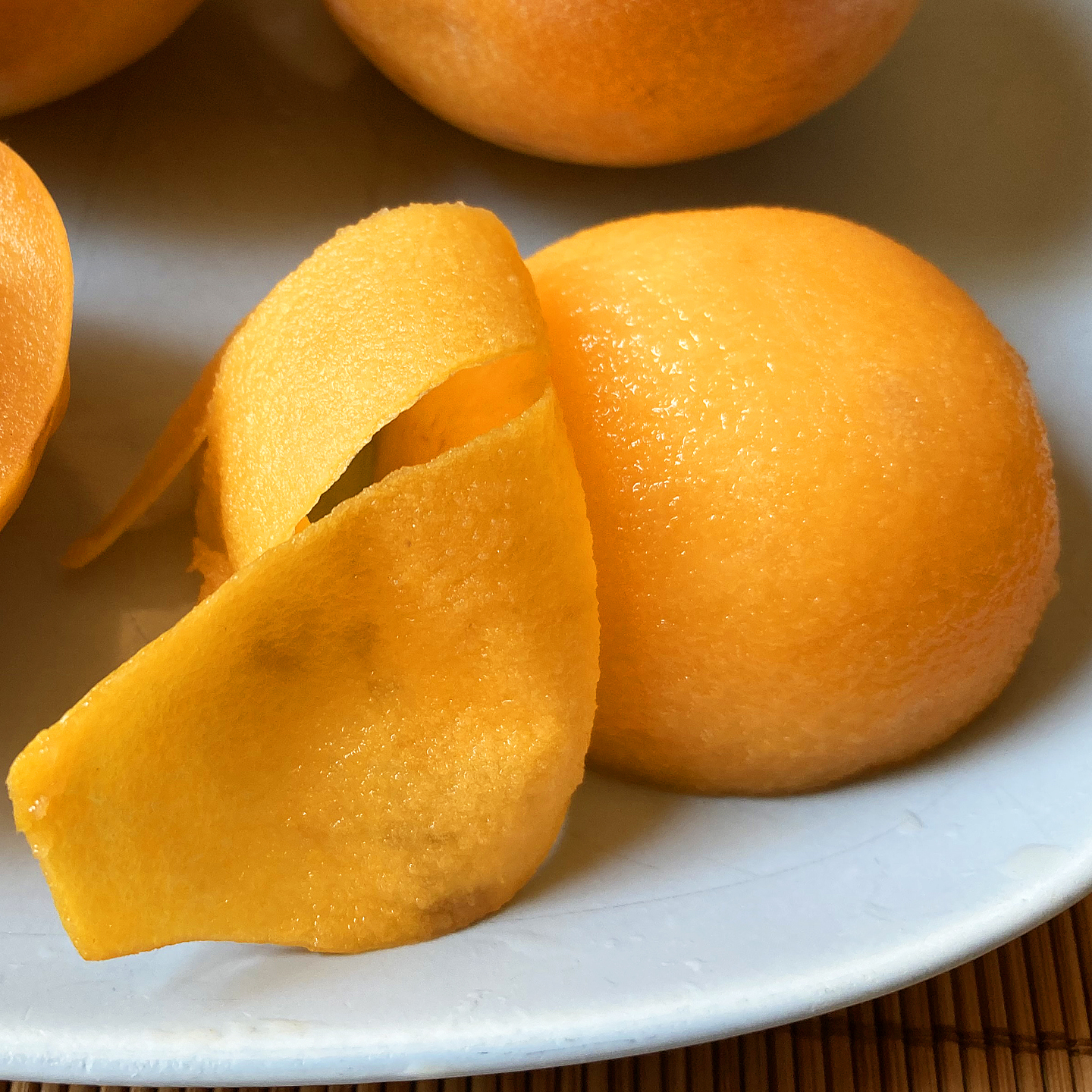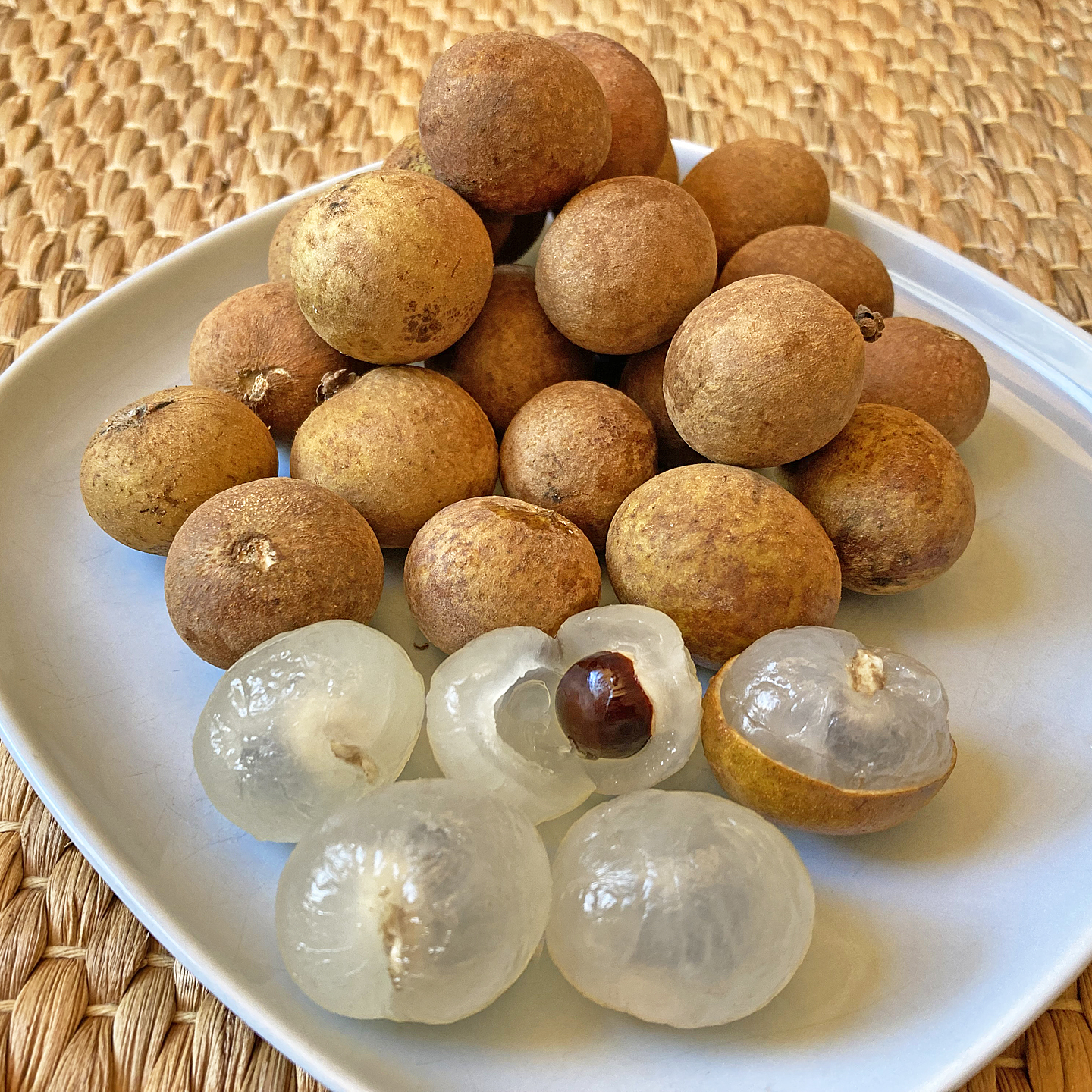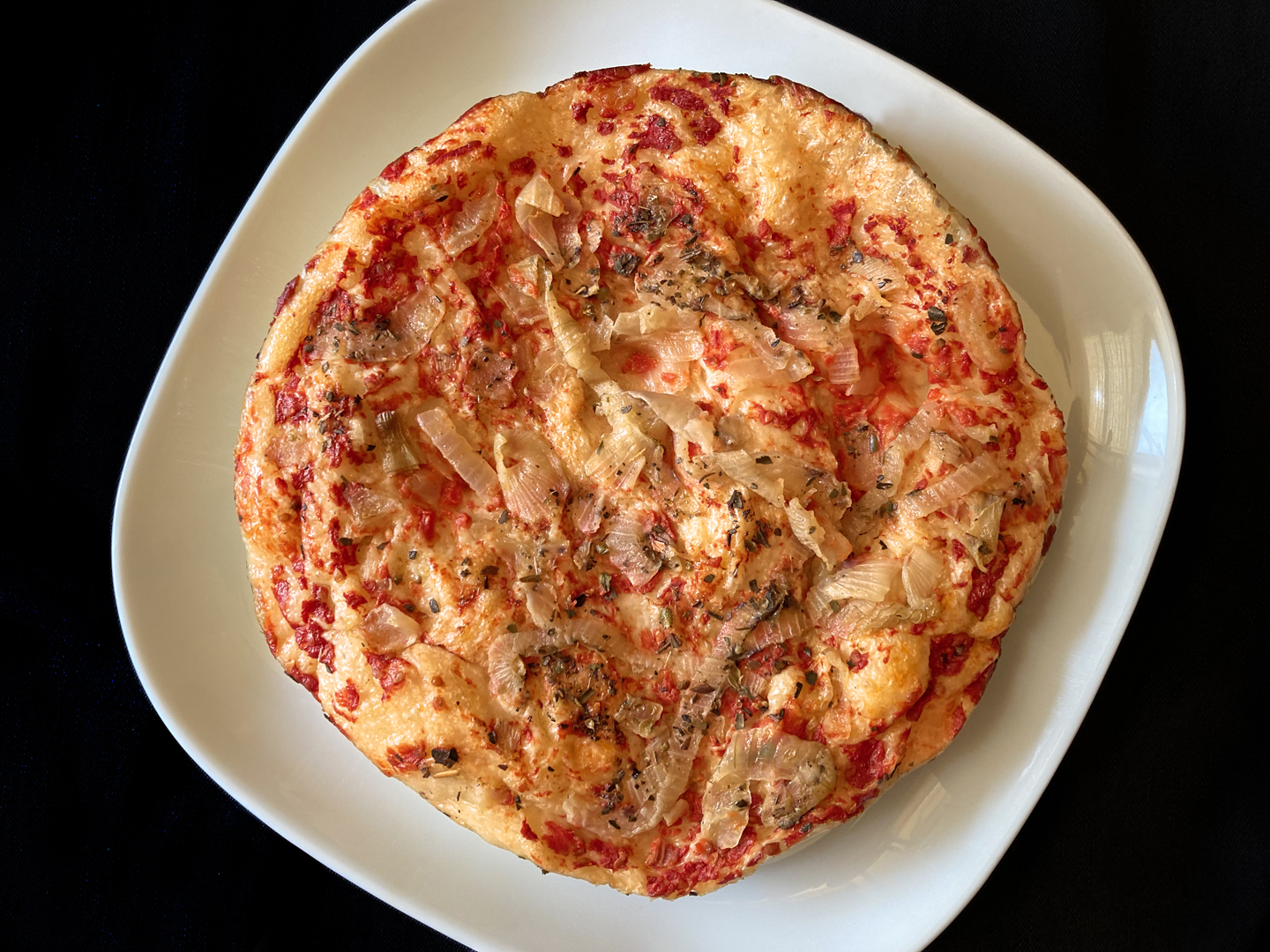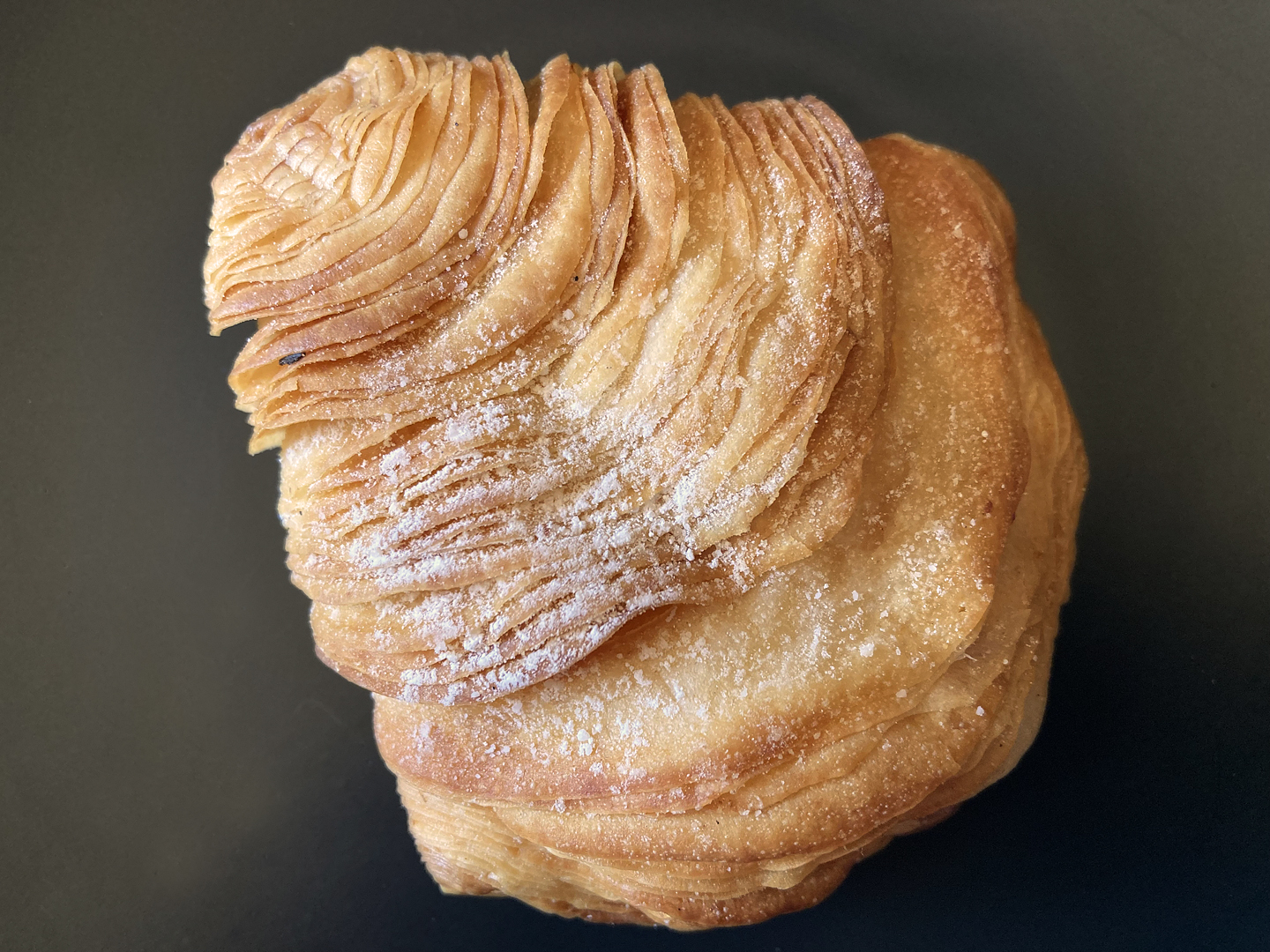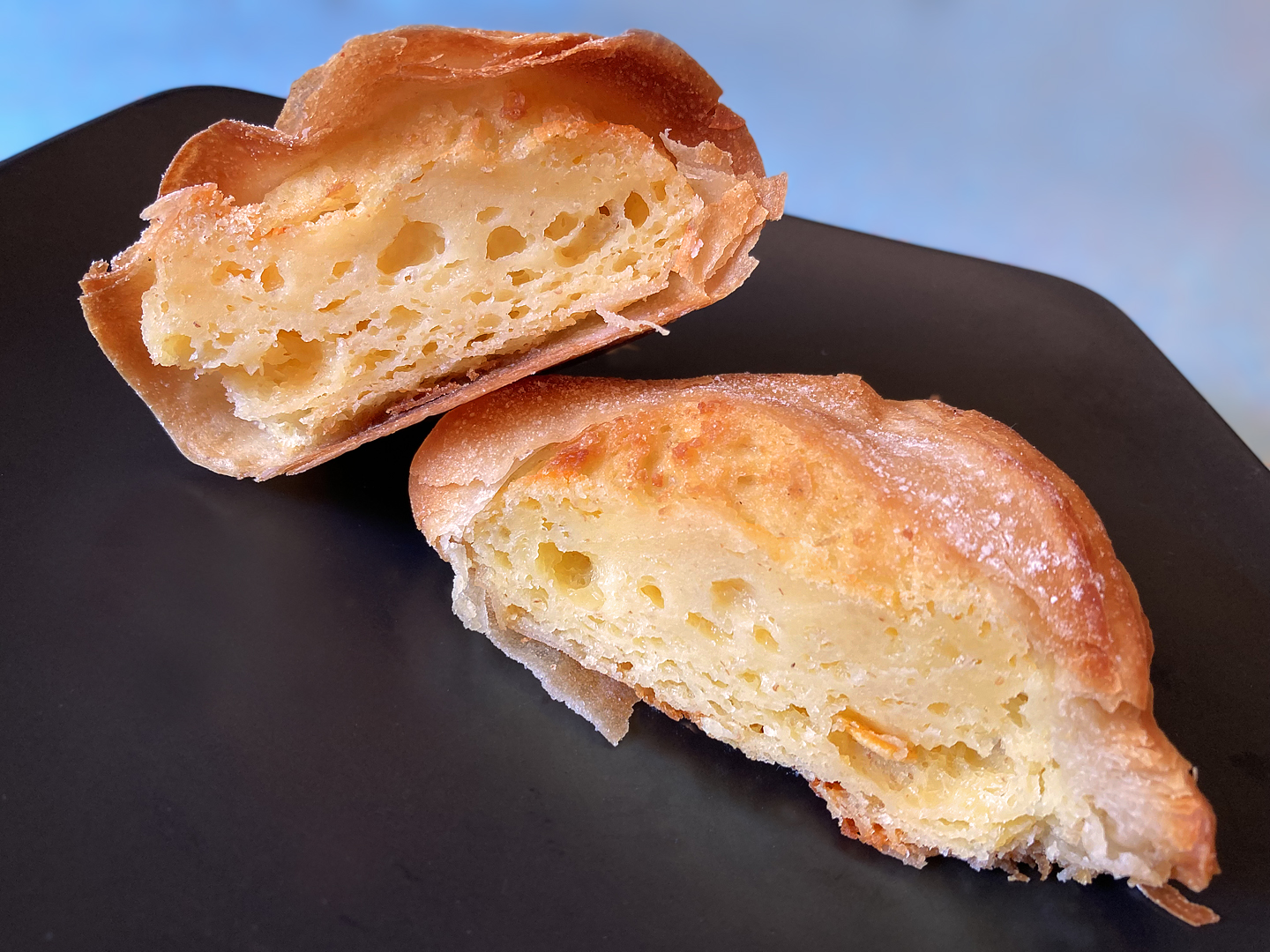(Or so goes the first line of the song.)
As is my gratifying habit, I was scanning Roosevelt Ave in search of anything new on the scene that might belong in my Flushing ethnojunket. Lining the avenue is an extensive stretch of Chinese markets, restaurants, teashops and bakeries, punctuated by streetside vendors offering fried dumplings, buns, skewers, a duck anatomy course (wings, necks – literally heads to feet), a shop dedicated to Spanish Ibérico ham…wait, what?
Obviously, I had to investigate. Turns out, House of Ibérico is owned by a Chinese gentleman, but the hams are definitely of Spanish provenance. “Upscale” doesn’t begin to do the business justice.
(Click on any image to view it in high resolution.)
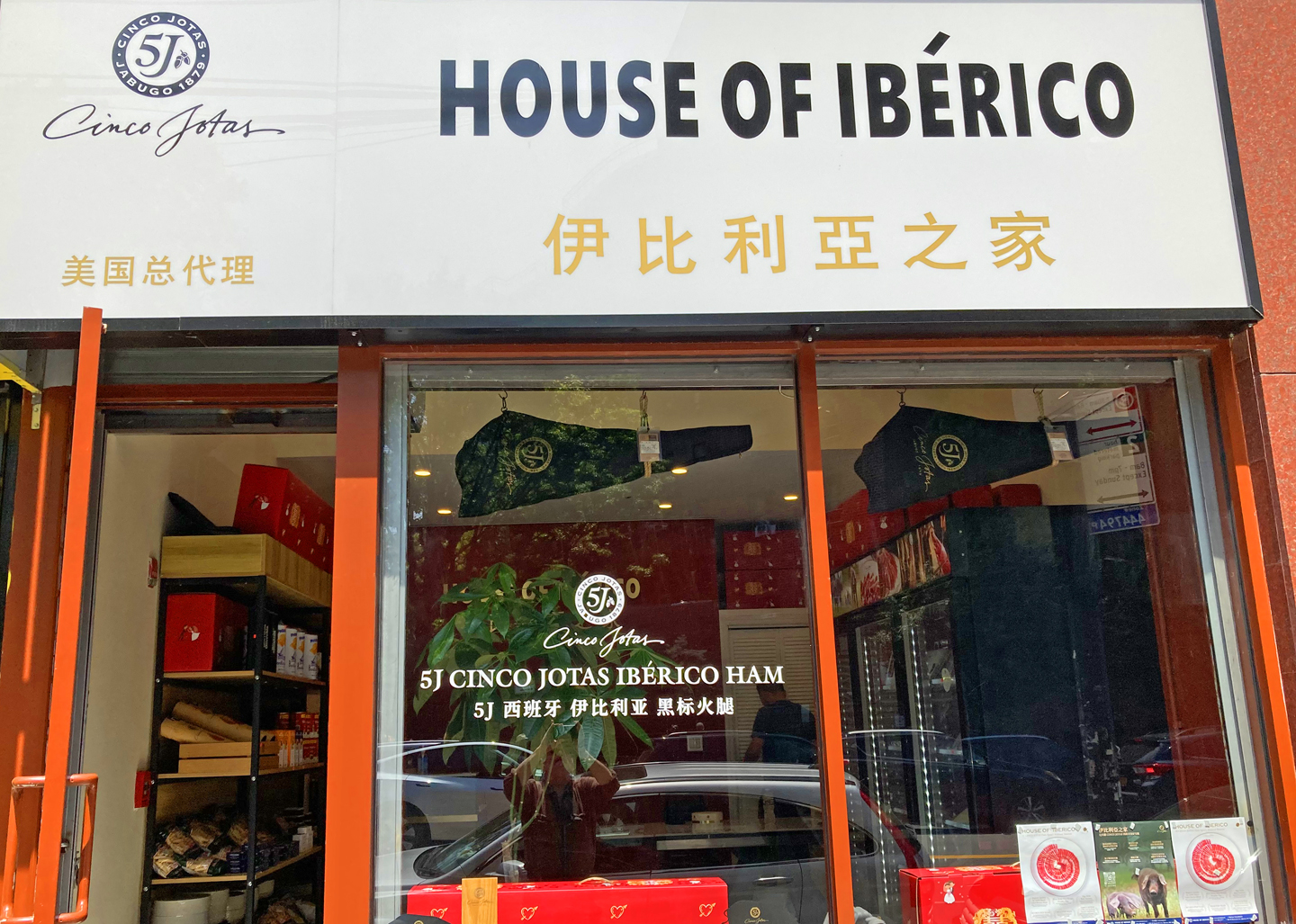
I purchased one of the products on display, dry-cured Fermín Serrano Loin from acorn-fed pigs: gossamer thin slices of tender ham, not at all spicy despite my having been cautioned, savory but not salty, almost nutty, and as tasty as it was expensive.
So I cobbled together a platter of the sophisticated meat, some Spanish cheese, slices of fresh plum, along with bread and fig jam, and since the second line of the song is “One of these things just doesn’t belong,” I selected a Middle Eastern spicy preserved lemon to adorn the center of the plate. Bullseye!

